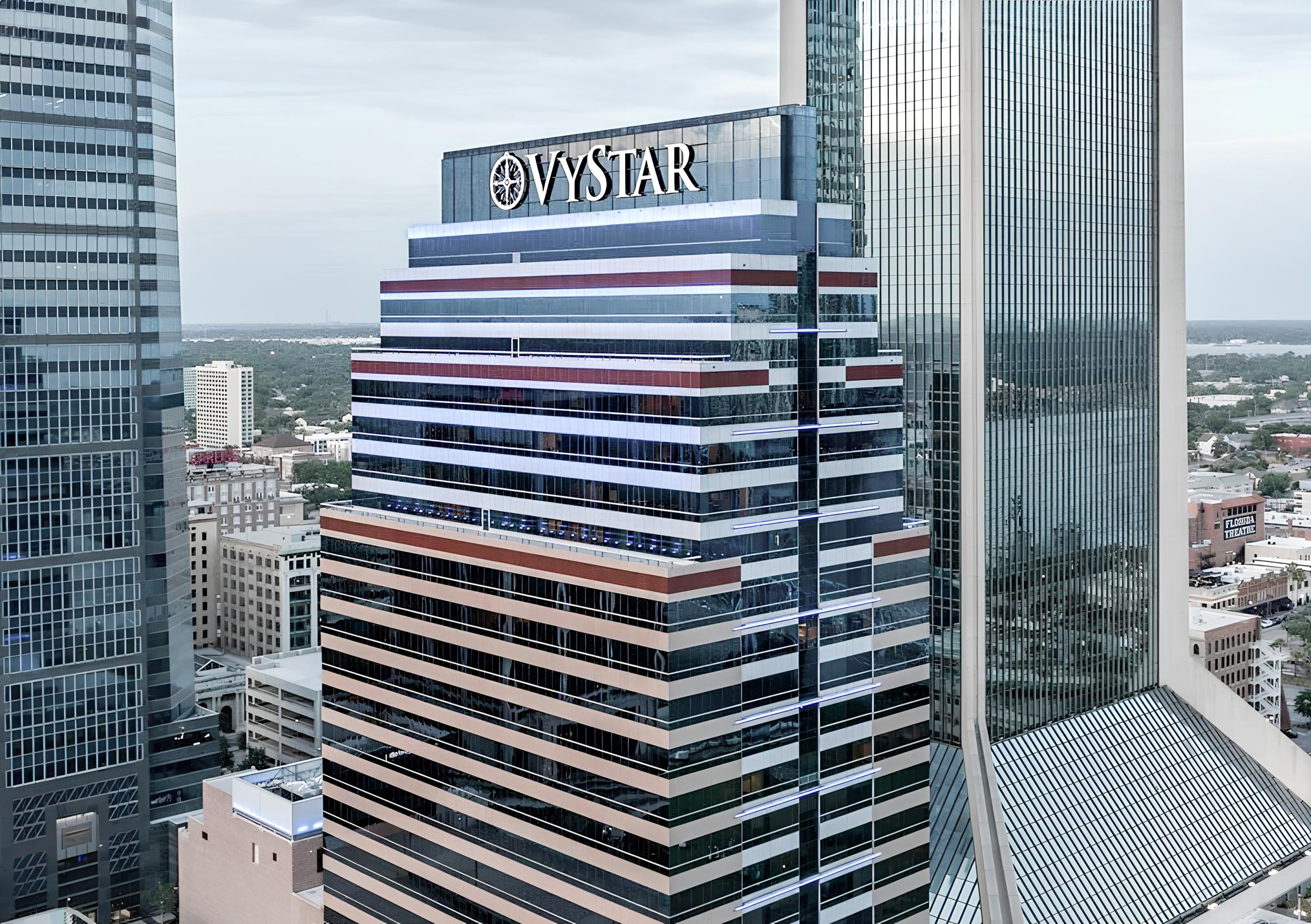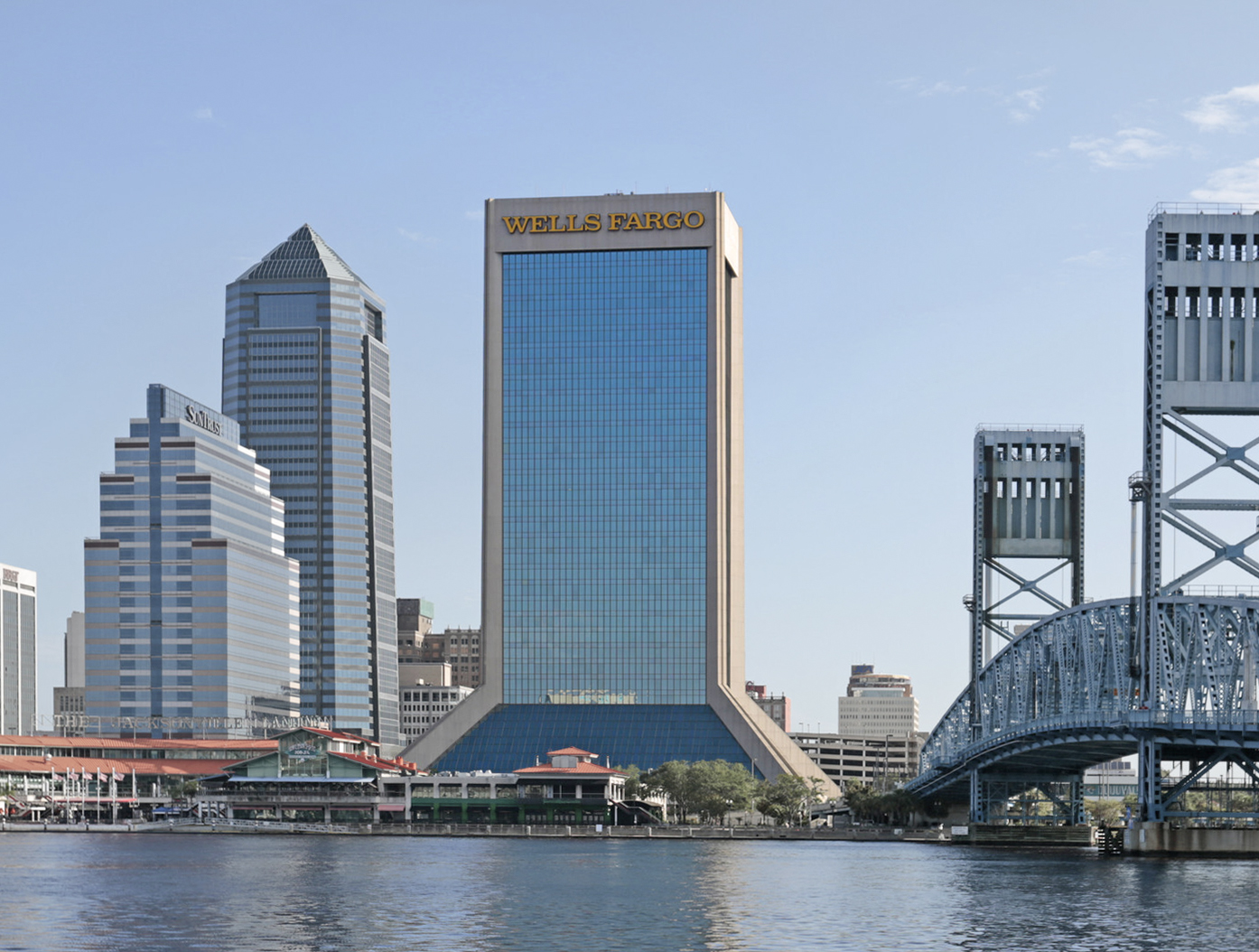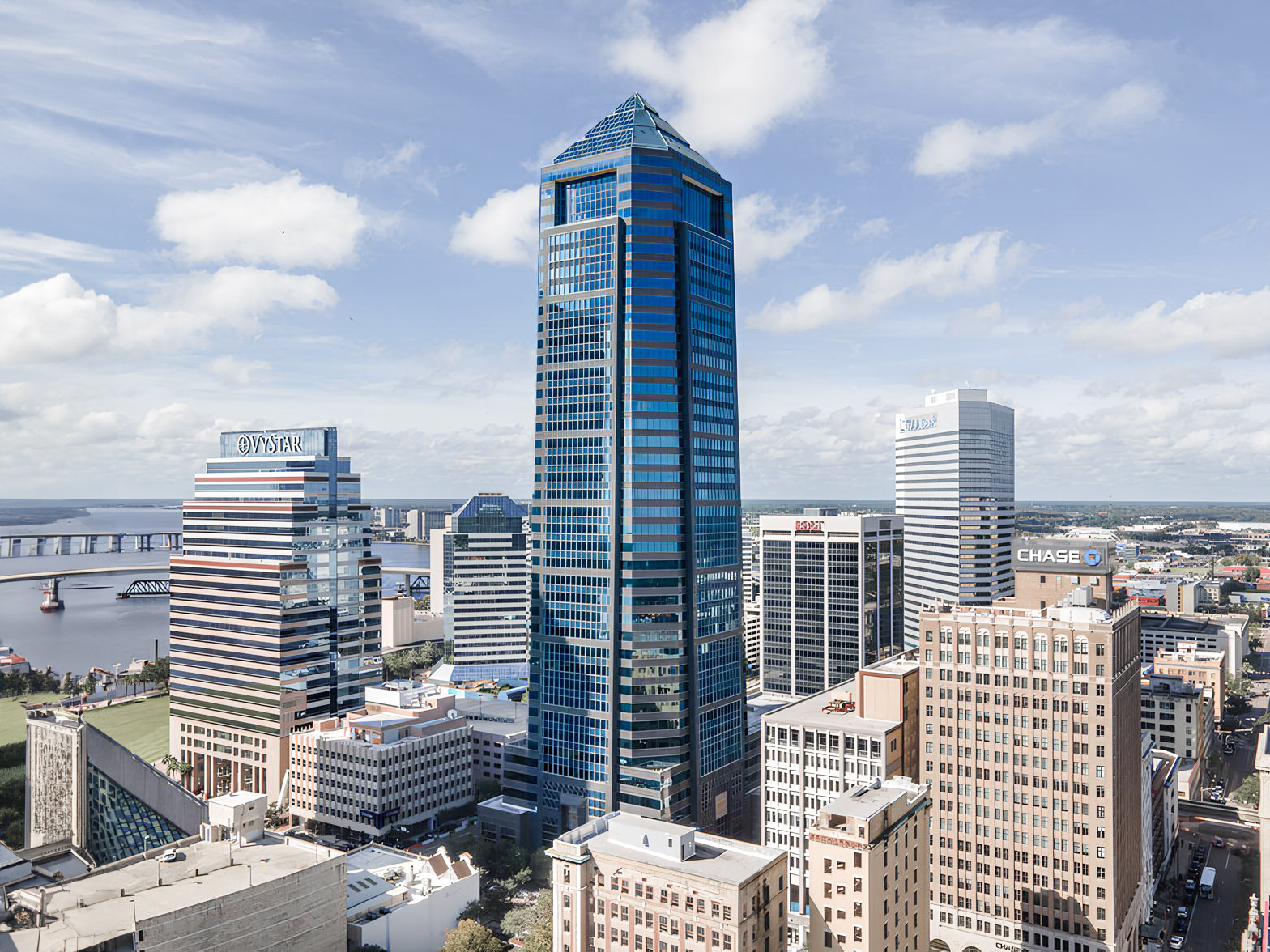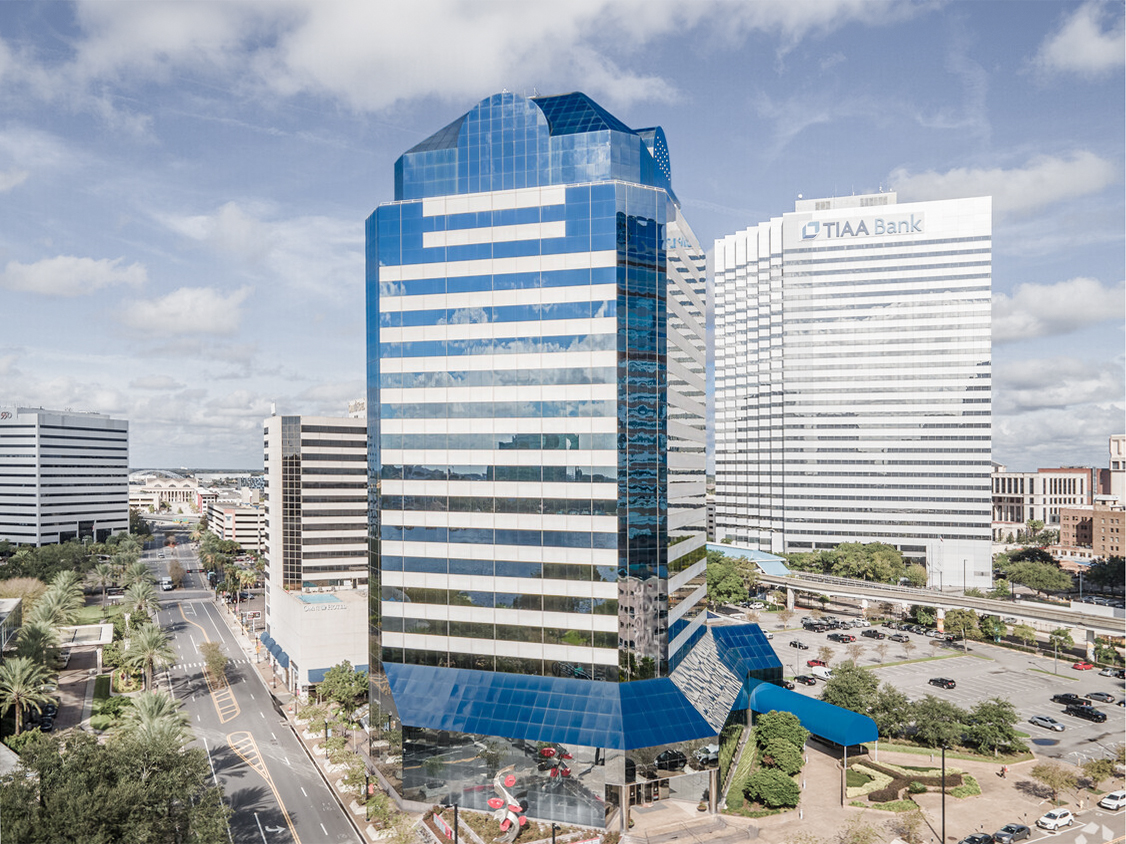The VyStar Tower is a Postmodernist skyscraper designed by KBJ Architects, and built between 1987 and 1989, for a reported $60.0 million dollars, in Jacksonville, FL.
VyStar Tower is not the only name you might know this building by though. It is common for companies to want to attach their names to iconic buildings when they move in, or for the general public to come up with nicknames, and this one is no exception. The building has changed names several times over the years, and is also known as:
- American Heritage Life Building between 1989 and 1991.
- SunTrust Tower.
- Jacksonville Center.
- Humana Building.
- VyStar Tower from 2019 until this day.
Its precise street address is 76 South Laura Street, Jacksonville, FL. You can also find it on the map here.
In 1991 the VyStar Tower was awarded with the Award for Excellence in Architecture Arts Assembly of Jacksonville.
The building underwent a major restoration between 2018 and 2022. The architect commissioned to undertake this restoration was RS&H .





